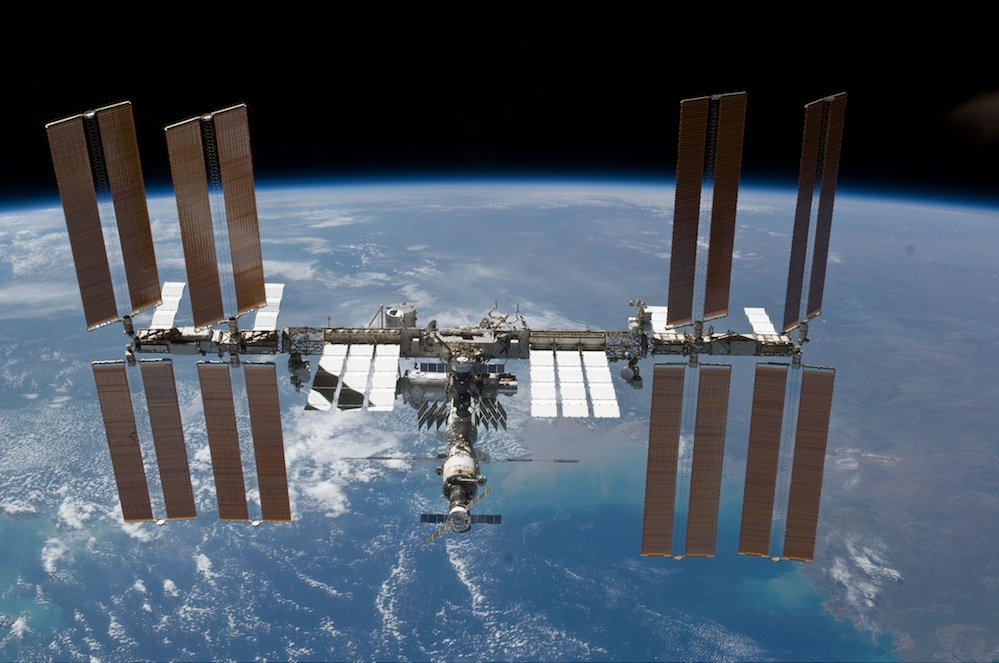It’s now a space program tradition. Whenever we start a new SSEP flight opportunity, it’s time for NASA Johnson Style. It’s a video (below) that will get students and teachers in the frame of mind to start Mission 7 to ISS. We want everyone to recognize that what they are about to embark on is very real. Your students are being asked to truly slip on the shoes of microgravity researchers and be part of America’s Space Program.
Program operations for SSEP Mission 7 to the International Space Station (ISS) – the ninth SSEP flight opportunity – officially begin on September 8, 2014. As of 9:30 am ET today, August 28, 2014, we have 20 communities aboard Mission 7, and another 11 still working to come aboard by program start. This SSEP mission will be record breaking – we expect nearly 10,000 students across the nation formally engaged in real microgravity experiment design and proposal writing.
While onboarding of communities continues for Mission 7, the 15 selected flight experiments comprising the Mission 5 Charlie Brown payload, and reflecting the culmination of 6,750 students engaged in experiment design and 1,344 flight experiment proposals received from student teams, are currently aboard the International Space Station, 260 miles above the Earth, traveling at 4.5 miles/second. On-orbit operations are proceeding, with astronauts conducting the experiments according to the protocols defined by the student flight teams. The teams are concurrently conducting their critically important, identical, ground truth experiments on Earth, and all on-orbit operations are being captured via the Mission 5 to ISS Experiment Log page.
Meanwhile, the 18 selected flight experiments comprising the Mission 6 Yankee Clipper payload are moving through flight safety review at the Toxicology Office a NASA Johnson Space Center, and all flight teams are preparing to ship their flight mini-labs to Houston for payload integration by mid-September. Yankee Clipper is scheduled to launch to ISS aboard Orb-3 in mid-October, 2014, from the Mid-Atlantic Regional Spaceport (MARS), Wallops Island, VA, and we expect delegations from the Mission 6 communities to attend the dramatic launch. We will be watching from a location just 1.7 miles from Pad 0-A. (See the Mission 5 Launching Viewing Plans page to get a sense of the expected launch activities at the launch site.) The Mission 6 flight opportunity engaged 6,860 students in experiment design and 1,487 proposals were received from student teams.
WELCOME ABOARD TO THE MISSION 7 to ISS COMMUNITIES
To all Community Program Directors across the SSEP Mission 7 communities, use this video to get your students ready to roll. Put it up on the big auditorium (or cafagymateria) screen, turn down the lights, and turn up the volume.
It’s our way of saying welcome to America’s Space Program. We are now a ‘go’ for launch of the Odyssey payload of Mission 7 experiments in Spring 2015.
Real spaceflight all the time – that’s what we promised. In terms of STEM education for the 21st century, it’s the right stuff.
The Student Spaceflight Experiments Program (SSEP) is a program of the National Center for Earth and Space Science Education (NCESSE) in the U.S., and the Arthur C. Clarke Institute for Space Education internationally. It is enabled through a strategic partnership with NanoRacks LLC, working with NASA under a Space Act Agreement as part of the utilization of the International Space Station as a National Laboratory. SSEP is the first pre-college STEM education program that is both a U.S. national initiative and implemented as an on-orbit commercial space venture.
The Smithsonian National Air and Space Museum, Center for the Advancement of Science in Space (CASIS), and Subaru of America, Inc. are National Partners on the Student Spaceflight Experiments Program.


Comments are closed.